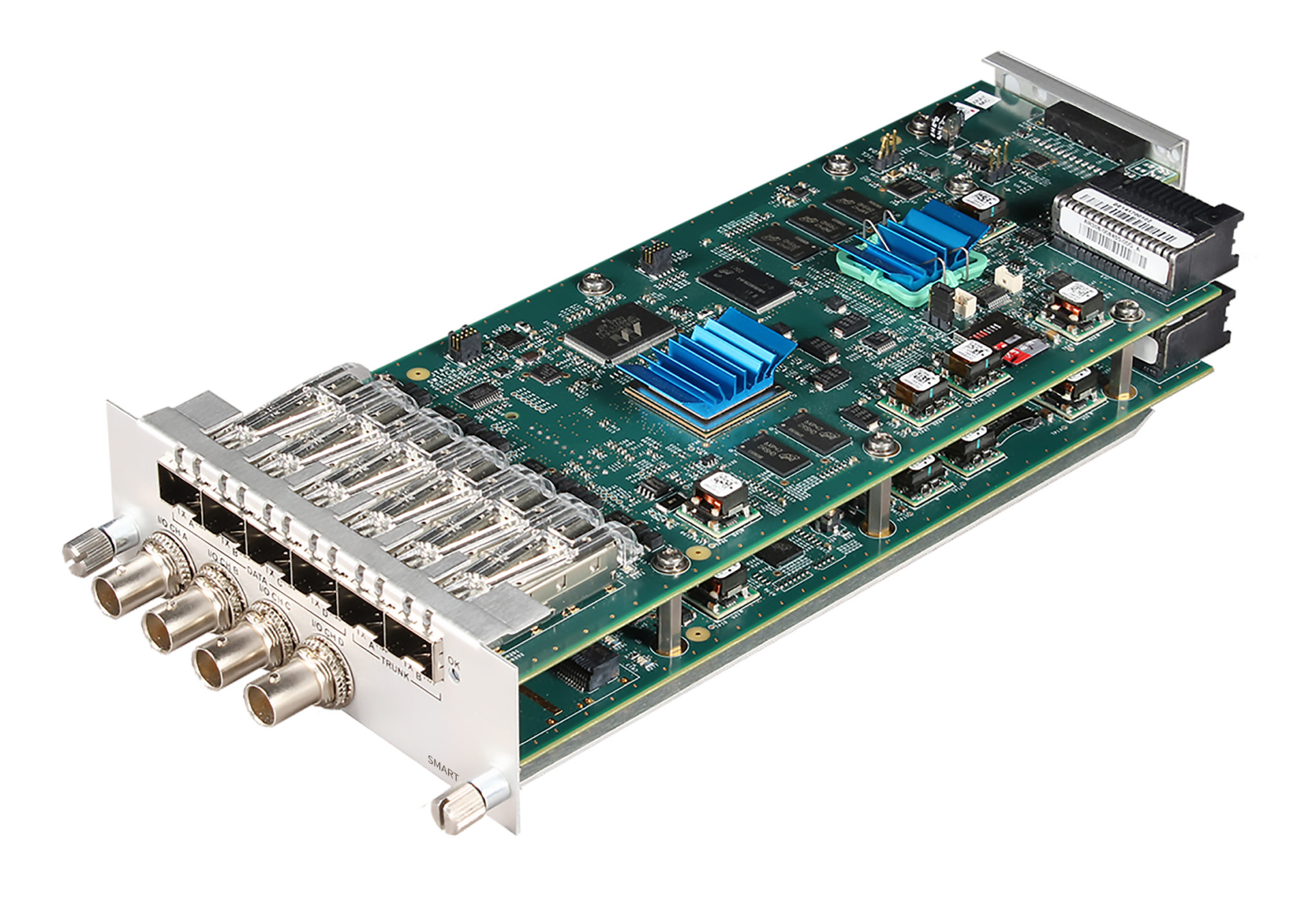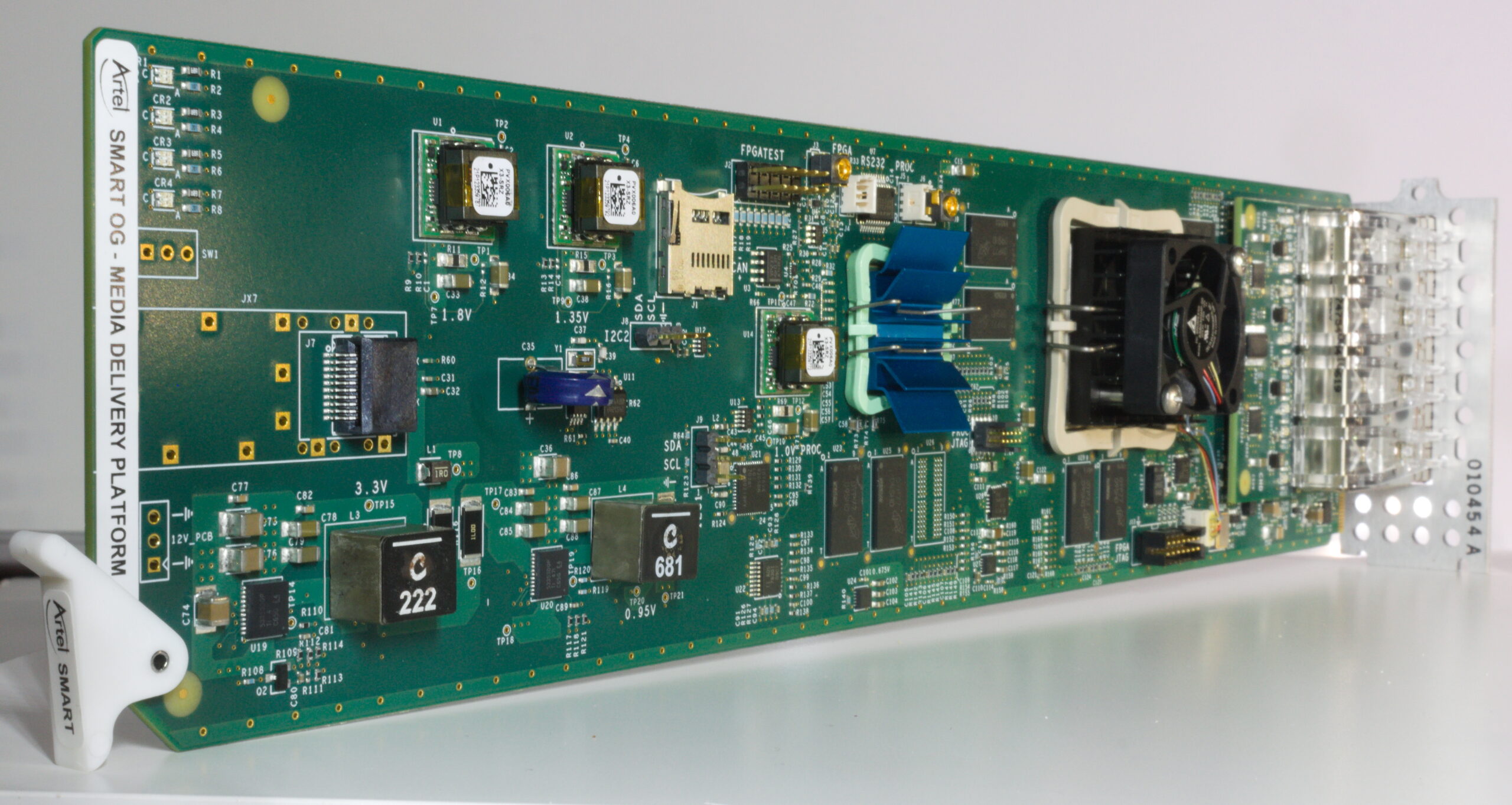One of the world’s leading aeronautics and space research organizations needed a modern, reliable, and highly accurate solution for synchronizing operations across control rooms/centers, IT rooms, launch pads, and other mission-critical facilities. Such a solution will be vital for the organization as it moves toward IP-based synchronization and timing distribution for mission critical applications. The existing system relied on proprietary, legacy, and end-of-life components, presenting an opportunity for both modernization and standardization.
Artel Video Systems to Demo SMART Media Delivery Platform at IBC2022
Artel Video Systems, a world-class provider of innovative, real-time multimedia delivery solutions, today announced its product highlights for IBC2022 in Amsterdam. On Stand 1C99, the company will feature products that simplify broadcasters’ shift to hybrid IP/SDI and all-IP operations. Visitors can get hands-on demonstrations of the SMART Multimedia Delivery Platform in DigiLink/InfinityLink configurations and the award-winning SMART Multimedia Delivery Platform in openGear® (SMART OG).
“While IP networking opens up a world of possibility for innovative new broadcast workflows, it’s also inherently more complicated than traditional networking. Relying on purpose-built hardware that is not reprogrammable, means broadcasters have the expensive and time-consuming task of swapping out hardware every time they need to change functionality,” said Rafael Fonseca, Vice President of Product Management at Artel Video Systems. “Our modular, software-defined systems counteract that problem. At IBC2022, broadcasters will see how Artel products can greatly increase operational flexibility and reduce effort as they transition to IP and move to optimize their IP-based operations and workflows.”
Throughout the show, Artel will highlight the SMART (DigiLink/InfinityLink and openGear) platform’s JPEG-XS support and flexibility. Attendees will see how they can enable different functionality on the installed hardware system as needed just by selecting different software icons. Artel will show one SMART implementation running J2K compressed video and another (the SMART OG) running JPEG-XS compressed video so that attendees can appreciate SMART’s ability to support different personalities on the same hardware module. Artel’s SMART Media Delivery Platform is a software-defined, four-channel, auto-sensing 3G/HD/SD-SDI-over-IP multifunction gateway with integrated nonblocking Layer 2/3 switching and routing capabilities. The software-enabled solution features four video ports for transporting video, audio, and ancillary data and four GigE data ports bridged to one or two 10G interfaces. Designed to attach seamlessly to the IP network without the need for external network elements, the SMART platform supports SMPTE ST 2022-1, 2, 5, 6, and 7 (hitless switching); J2K compression; QoS; VLAN tagging; and traffic management.
A software-defined, four-channel, auto-sensing SD-SDI/HD-SDI/3G/4K-over-IP multifunction gateway, SMART OG is the first to bring the family of JPEG compression engines — including those specified in VSF TR-01, TR-07, and TR-08 — onto the openGear platform. With SMART OG, users can deploy hardware once and easily change the gateway function via a software update. The SMART OG is initially configured for a specific function, but it may be adapted thereafter for a growing array of functions, such as reformatting or encoding per JPEG2000, JPEG-XS, SMPTE ST 2110, SMPTE ST 2022-1/2/5/6/7, H.265, IEEE 1588, and more. The gateway provides four BNCs for SDI or ASI input/output and two 10GbE SFPs for trunking and aggregation.
Visitors to the stand will also be able to see Artel’s Quarra family of PTP-aware managed IP switches, which offer the industry’s most accurate IEEE 1588-compliant timing and synchronization. Quarra now features quieter fans and new software-based controls that vary fan speed based on temperature for less overall noise. Also on display will be Artel’s FiberLink® SMPTE ST 2110 gateway. Supporting nearly every type of video, audio, and data signal, Artel’s FiberLink media transport products bring much-needed flexibility to broadcast or corporate studios, OB vans, point-of-view cameras, rental and staging, auditoriums, stadiums and theaters, transportation hubs, distance learning, and other pro A/V environments. Devices in the family boast support for SMPTE standards to ensure interoperability and reliability.
Operational Simplicity: A Business Imperative
IP networking has opened up possibilities for software and platforms not traditionally found in broadcast — such as switching and routing, asset management, and transcoding video for viewing on different mobile devices, editing platforms, and search engines. But while IP produces opportunities for creativity and innovation, it is also inherently more complicated than traditional networking … and thus potentially more costly from an operational perspective. Broadcast workflows and the inherent speeds/bandwidth of the content require real-time processing. In the past this could only be accomplished with specifically built hardware that is not reprogrammable — resulting in operational complexity for broadcasters that must change their environment’s functionality on a case-by-case basis.
This creates a dilemma for broadcasters that want to innovate but are always striving to save money, either by reducing waste, reducing effort, eliminating functions, or a combination of the three. Recent advances in the processing power of programmable components creates an opportunity for functional flexibility. To take advantage of IP, broadcasters need an easy way to leverage its power and flexibility while keeping operational costs down.
Say Hello to the Artel SMART Media Delivery Platform.
Artel’s solution sits at the confluence of three trends: the advent of software-defined functionality, the migration to IP workflows, and the ever-present need to reduce operational costs.
By addressing all three of those trends in one card, our SMART Media Delivery Platform counteracts the complexity while giving broadcasters a simple way to integrate IP into their operations. And simplicity can mean lower costs.
The SMART platform is essentially a media-over-IP gateway used mainly in contribution workflows or in video transport applications. It is a card that comes in either our DigiLink/InfinityLink form factor or in an openGear form factor. In both cases, the card(s) goes inside those chassis or frames as part of an overall solution. We call it a “platform” because the SMART technology inside any of those form factors is the same. It allows you to deploy features very easily across cards simply by programming the platform.
For example, broadcasters have used SMART to transport video from a main broadcast station to affiliates. Others have deployed SMART in contribution workflows in stadiums, transmitting live video from the venue to broadcast facilities. It is also being considered for deployments in OB trucks/vans for live sports. On the service provider side, telecom providers have been testing it to transport video to local hubs for eventual programming distribution.
In those scenarios and many more, users can monitor, control, and provision the SMART platform using element management or network management systems via northbound interfaces. In fact, the ability to program functionality remotely using software is one of SMART’s most important characteristics.
Traditionally, functionality is attached to hardware. For example, if the solution was transporting uncompressed video, and you wanted to change to compressed video, technicians would have had to physically swap modules or cards to reflect this change, which can be time-consuming and costly. This also means you must keep an inventory of cards/modules and all the possible functions you envision using. All cards/modules must have a one-to-one correlation with all the different pieces of hardware they work with. Different functions require different pieces of hardware.
But because of SMART’s software-defined nature, you need only install hardware once and then use software updates to change the gateway’s functionality as needed. The platform can take on the following personalities without changes in hardware: JPEG2000, JPEG-XS, SMPTE ST 2022-7, SMPTE ST 2110 ingestion, SMPTE ST 2022-1/2/5/6, and HEVC.
The Biggest Benefits — Simplicity Breeds Savings
SMART responds to the need for operational simplicity, flexibility, and ubiquity during the industry’s migration to IP. Because SMART is a software-defined platform, there is no need to replace cards to change functionality. Instead, you can use software to program a high degree of functionality and support a high density and capacity of video channels, which reduces power consumption, cabling, and space.
The SMART platform also allows for automation, reduces inventory (as you only need one module, which can take different personalities), eliminates the need to physically remove equipment, and provides for fast provisioning of new functionality.
For more information visit https://www.artel.com/media-transport-products/?swoof=1&product_cat=smart-media-delivery-platform.









